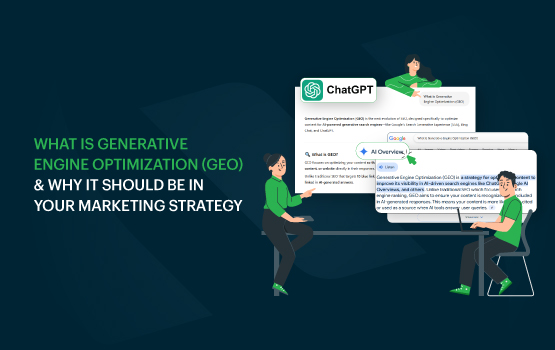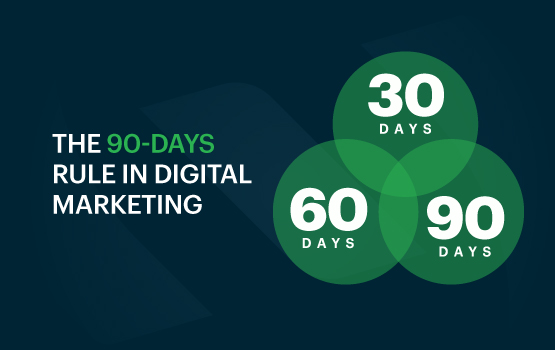A New Era of Search is Here — Are You Ready?
Just when you thought you had SEO all figured out, a game-changer has entered the court. Generative Engine Optimization (GEO) is not just a buzzword — it’s a bold new strategy reshaping how your content gets discovered in the age of AI.
Modern AI search engines don’t simply provide a list of answers — they generate them. If your content is not GEO-optimized, then you are not only behind… you are invisible.
AI-driven search engines like OpenAI’s ChatGPT and Perplexity are experiencing significant growth, with referral traffic increasing by BrightEdge AI Search Report, respectively. This surge underscores the growing importance of optimizing content for AI-generated responses.
A Surfer SEO AI Overviews Study found that more than half of the links shown in Google’s AI answers also appear in the top 10 regular search results. This means that well-ranked content is more likely to show up in AI-generated summaries, too.
Let’s understand how GEO is changing the face of digital marketing, what it means for your content strategy, and how to get ahead before your competitors do.
What is Generative Engine Optimization (GEO)?
Generative Engine Optimization (GEO) is how you optimize your website and content so AI-powered platforms read, interpret, and present your content in a response.
These AI systems don’t simply return links like traditional Google search; they generate answers in natural language that summarize and synthesize the best information available.
In simple terms, GEO is about making sure that your brand or business becomes part of those answers.
Whether someone is asking ChatGPT for the best cafes in Ahmedabad or Perplexity for the top home decor brands in India, you want your business to show up in that AI-generated answer. And that’s exactly what GEO helps with.
Why GEO Matters Now More Than Ever
Search behavior is evolving. They’re no longer just entering keywords into search engines — they’re posing full, natural language queries. They’re demanding immediate, specific responses.
This change requires a different type of content strategy—beyond traditional SEO. GEO maps to how contemporary users search, as well as how AI tools retrieve, analyze, and display content. Investing in GEO today is future-proofing your online visibility.
By 2026, Gartner Predicts Search Engine Volume Will Drop 25% by 2026, with organic search traffic dropping by more than 50% as more people turn to AI-powered search.
Also, 70% of consumers already trust generative AI search results, and 79% of them anticipate using AI-enhanced search within the next year.
Traditional SEO is no longer enough. To successfully attract and hold users’ attention on AI-driven platforms, brands need to adjust by incorporating GEO into their strategies.
GEO vs. Traditional SEO: What’s the Difference?
Although GEO and SEO may sound similar, they serve different (yet connected) purposes.
Similarities:
- Both aim for visibility: The goal is to be found easily online.
- Keyword strategy matters: Both require smart keyword use, though GEO emphasizes natural, long-tail, and conversational phrases.
- Content quality is king: Relevance, clarity, and E-E-A-T (Experience, Expertise, Authoritativeness, and Trustworthiness) apply to both.
- User experience focus: GEO and SEO prioritize content that serves the user’s needs effectively.
- Ongoing strategy: Both require continuous updates and monitoring.
Key Differences:
| SEO | GEO |
| Targets traditional search engines like Google and Bing | Targets AI-driven tools like ChatGPT, Gemini, and Copilot |
| Optimizes for ranking in link-based search results | Optimizes for inclusion in AI-generated answers |
| Emphasizes keywords, backlinks, and metadata | Emphasizes structured content, context, and conversational clarity |
| Measure clicks, impressions, and page rankings | Measures mentions AI citations and traffic from AI responses |
How Does GEO Work?
GEO is rooted in helping AI engines understand and use your content effectively. Here’s a breakdown of what goes into a successful GEO strategy:
1. Conversational Content
AI tools favor natural-sounding answers. Content should sound like a helpful conversation, not a sales pitch or keyword dump. Answer common questions, explain concepts clearly, and anticipate what users may ask next.
2. Structured Formatting
Use bullet points, headings, FAQs, and clean layouts. Structured data makes it easier for AI systems to parse your content and extract relevant details.
3. Entity-Based Content
Instead of just keywords, GEO focuses on entities—specific people, places, things, or concepts. This helps AI engines associate your content with relevant topics and niches.
4. Semantic & Long-Tail Keywords
Instead of only targeting “best running shoes,” include “What are the best running shoes for beginners?” or “Are lightweight running shoes good for long-distance?” These reflect how people talk—and search—in real life.
5. Source Authority
AI engines pull content from trustworthy sources. Building your site’s authority through high-quality backlinks, mentions, reviews, and updated content boosts your GEO impact.
Why GEO Should Be a Part of Your Marketing Strategy
Here’s why businesses—especially forward-thinking ones—should integrate GEO into their digital game plan:
1.Expanded Visibility
AI tools are rapidly becoming people’s go-to for quick answers. If your business isn’t optimized for AI responses, you’re missing out on a massive audience segment.
2. First-Mover Advantage
While many brands are still catching up with basic SEO, adopting GEO now gives you a head start. Be the business that shows up in tomorrow’s answers—today.
3. Improved Brand Trust and Authority
When your content is quoted or recommended by AI systems, it boosts your credibility. It tells users: “This is a trusted source.”
4. Better User Experience
GEO isn’t just about ranking—it’s about relevance. It helps you deliver valuable information, improving user experience and increasing the chances of conversions.
5. Future-Proof SEO Strategy
SEO isn’t going away—but it is evolving. GEO builds on traditional SEO, ensuring your marketing efforts are aligned with where search is headed.
6. Integrating GEO with Traditional SEO
Rather than replacing SEO, think of GEO as the next logical step in your optimization strategy. A strong SEO foundation supports GEO, and vice versa.
Tips to Combine GEO + SEO:
- Update your existing content: Add conversational questions and answers to your blog posts and service pages.
- Create pillar pages: Comprehensive content pieces that cover a topic in-depth help both SEO rankings and AI visibility.
- Use structured data: Schema markup, FAQ formats, and entity tagging make your content more digestible to AI.
- Track AI mentions: Monitor if and how AI platforms are referencing your brand.
- Use natural tone: Write the way your customers speak. Think helpful, human-like, and engaging.
GEO in Action: Real-World Example
Imagine you run a home-grown organic skincare brand. With traditional SEO, your site may rank on Google for “organic face cream India.”
But what happens when someone asks ChatGPT, “What are the best affordable organic skincare brands in India?”
If your website has:
- The FAQ content answering this directly
- Product pages with clear benefits and natural language
- Reviews, blogs, and interviews online
- Good domain authority
Then the AI is more likely to include your brand in its answer.
That’s the magic of GEO.
GEO and Local Businesses: Why Location Still Matters
Even in the world of AI, local matters. If you’re a business based in Ahmedabad, optimizing your content with your location in mind is still essential.
For instance, an SEO Company Ahmedabad, can benefit from GEO by tailoring their content to reflect local expertise, client results, and regional insights.
By doing so, when someone asks “Best SEO Agency in Ahmedabad for startups,” AI tools can recommend your brand—if it sees your content as helpful and relevant.
Who Should Invest in GEO?
GEO is ideal for:
- E-commerce brands
- B2B service providers
- SaaS companies
- Healthcare and finance businesses
- Local SEO providers and marketing firms
- Content-heavy websites like blogs and news portals
Even if you already offer professional SEO Services, integrating GEO can help you stand out in a crowded marketplace.
Final Thoughts: Embrace GEO Before Everyone Else Does
GEO is not a fad—it’s the future of digital discovery. Adopting Generative Engine Optimization today places your business in the front row of how people will find, trust, and interact with brands tomorrow.
With the way we search increasingly centered around AI, businesses that neglect GEO could risk falling out of view. Conversely, those who adopt early will benefit from increased visibility, traffic, and a strong connection with their audiences.
So, whether you’re a growing business or a global brand, GEO is your ticket to a new frontier.
Are you prepared to future-proof your brand’s digital strategy? Get in touch with a GEO-aware SEO Company in Ahmedabad, India today and explore how this powerful optimization method can elevate your business.




